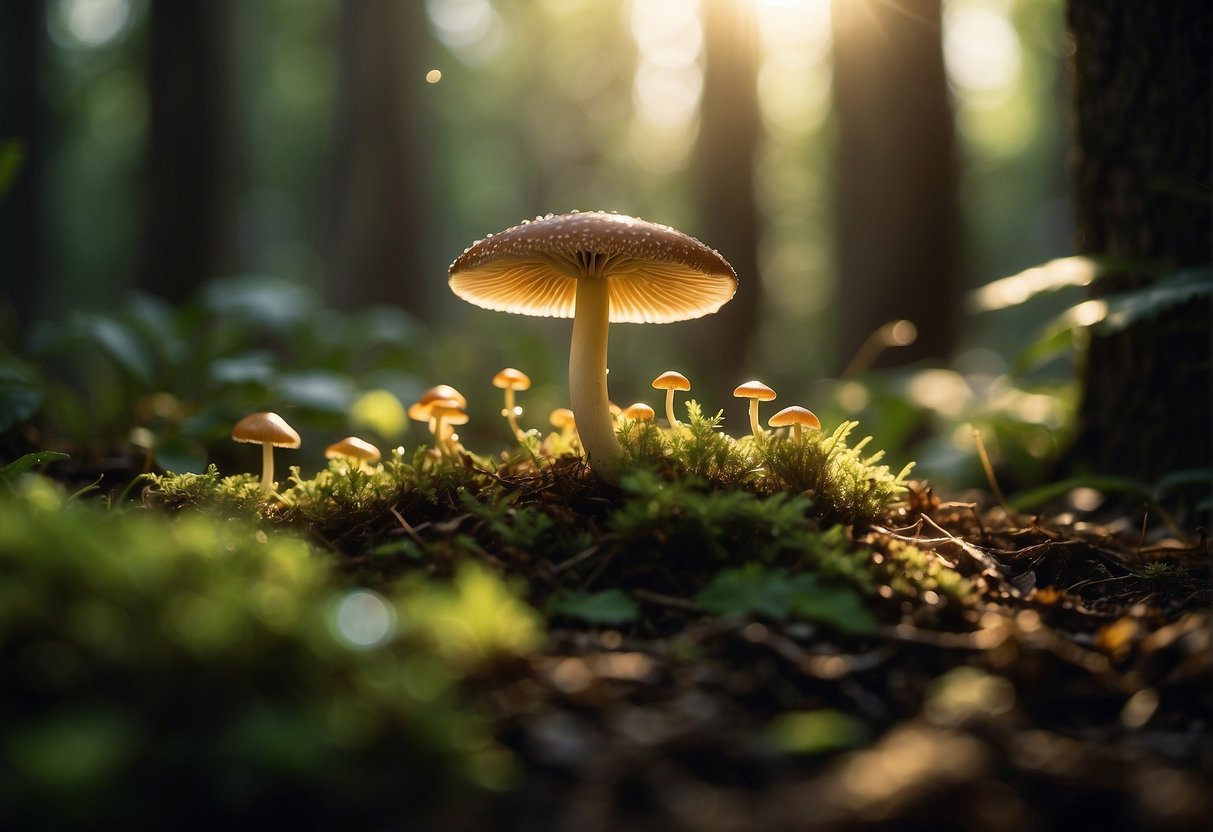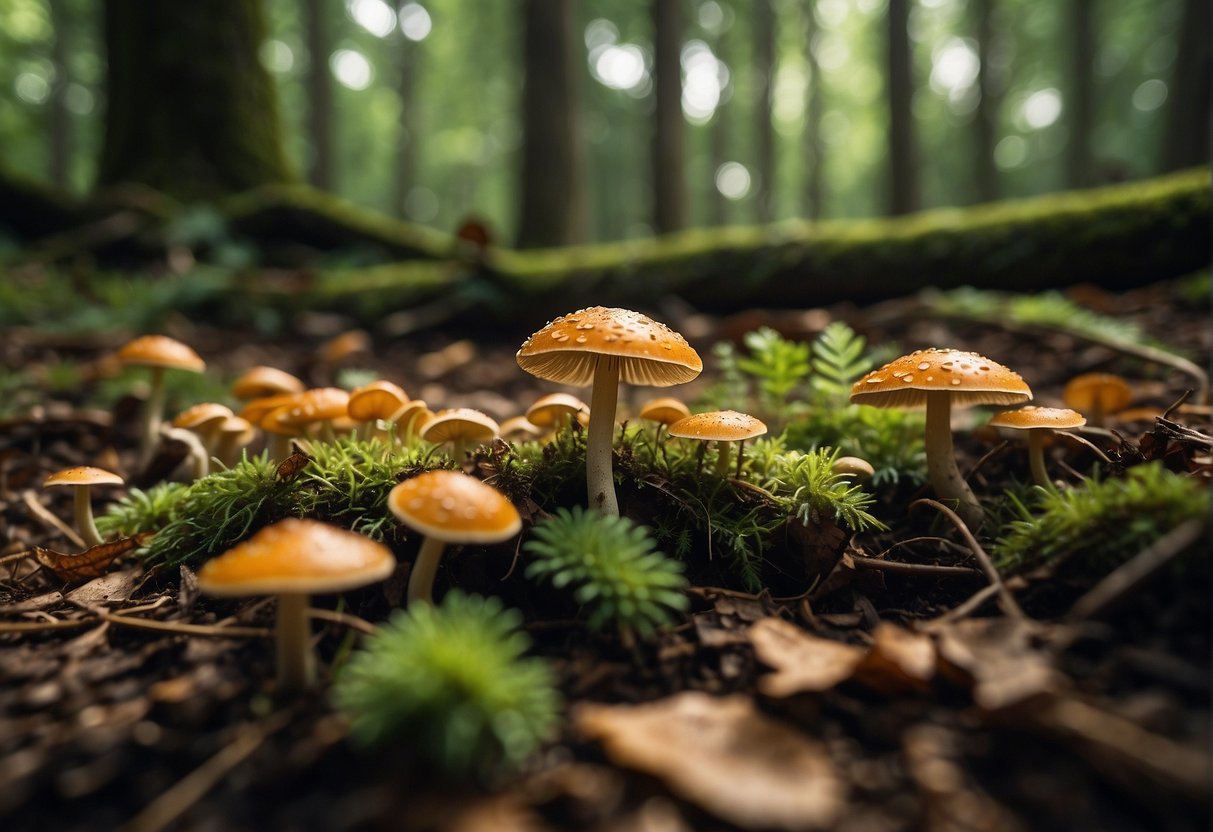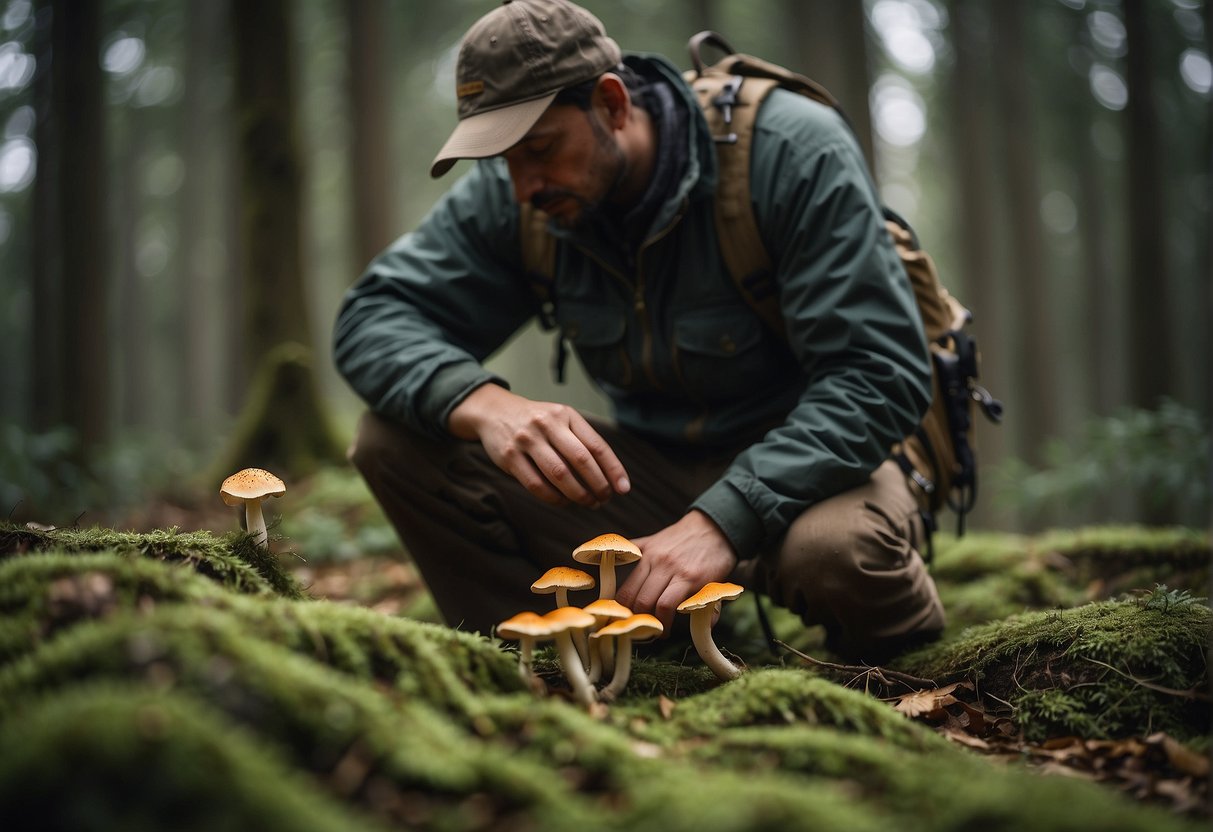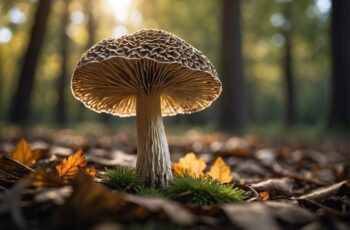Mushroom hunting has become a cherished tradition for many outdoor enthusiasts, as it blends the thrill of the hunt with the joy of being immersed in nature. As you step into the world of foraging, you’ll discover a hobby that’s both challenging and rewarding. The forests, fields, and hillsides can be treasure troves for a variety of edible mushrooms, with morel mushrooms being one of the most sought-after prizes. Their unique flavor and elusive nature make morel hunting a particularly exciting endeavor.

Understanding the basics of mushroom hunting is crucial to both your success and safety. You’ll need to equip yourself with knowledge about which mushrooms are safe to consume as well as the right tools for foraging. A trustworthy guidebook, a sturdy knife, and a breathable basket or mesh bag are just a few essentials to get you started. Learning to identify the different habitats and conditions where mushrooms thrive is also important; this knowledge will guide you to the spots where you’re most likely to find your fungal quarry.
While morel mushrooms are often the highlight of a forager’s harvest, remember that these fungi require specific conditions to grow. They typically appear in the spring, when the soil warms and there’s ample moisture. These mushrooms can emerge rapidly and have a short season, making timing a critical factor. Above all, ensure that your mushroom hunting is legal and sustainable, respecting local laws and the environment you’re exploring.
Key Takeaways
- Prepare for mushroom hunting with the right knowledge and tools.
- Recognize suitable habitats for finding mushrooms, particularly morels.
- Prioritize safety by correctly identifying mushrooms and adhering to legal guidelines.
The Basics of Mushroom Hunting
Embarking on the journey of mushroom hunting can provide both a thrilling adventure and a rewarding experience if you’re armed with the right knowledge. Remember, your safety and respect for nature are paramount.
Understanding the Types of Mushrooms
The forest presents a wide array of mushrooms, and knowing which are edible is critical. Edible mushrooms can offer a delicious addition to your meals, but poisonous mushrooms present a grave risk. Make sure to carry a field guide or use reliable online resources, such as the article from Curative Mushrooms, to accurately identify species. Here’s a simplified way to categorize mushrooms:
- Edible: Safe to eat when correctly identified
- Wild: Can be edible or poisonous, identification is key
- Poisonous: Harmful or lethal if consumed
Ethical Foraging Practices
As a mushroom forager, you’re a steward of the wild. Ethical foraging ensures sustainability and minimal impact on the environment. Follow these practices:
- Only harvest mushrooms you can positively identify.
- Use a knife to cut the stem, leaving the mycelium undisturbed.
- Harvest sparingly. A good rule is to leave at least two-thirds for nature’s course.
- Leave the habitat as you found it. Disturbance can affect the ecosystem and future growth of fungi.
When in doubt, consult with experienced foragers or resources like Mushroom Enthusiast to ensure you’re following best practices.
Essential Tools and Techniques

When venturing into the forested wilds for mushroom hunting, ensure you’re equipped with the right gear and knowledge. Proper tools enhance your efficiency, while understanding safe foraging practices keeps you protected.
Foraging Equipment
Before heading out, equip yourself with a sturdy basket for collecting your finds—it allows for spore dispersal, aiding mushroom propagation. Opt for a mesh bag to separate and carry multiple types of mushrooms without damaging them. Always carry a pocket knife to cleanly cut the mushroom stems, and remember to bring a field guide to identify various species on the go.
| Equipment | Purpose |
|---|---|
| Basket | Transport and spore dispersal |
| Mesh bag | Separate mushroom types |
| Pocket knife | Clean stem cuts |
| Mushroom field guide | Identify species |
Identifying Edible vs. Poisonous Varieties
Differentiating between edible and hazardous mushrooms is critical. Carry a comprehensive mushroom field guide with clear images and descriptions. Learn to create a spore print, a vital technique in identifying mushrooms as it helps to determine the mushroom’s identity by revealing the color and pattern of its spores. Always cross-reference with multiple sources when in doubt and consider books by expert mycologists to broaden your understanding of mushroom varieties.
Remember, safety is paramount in foraging—you must be certain of a mushroom’s edibility before consumption.
Habitats and Conditions for Mushroom Growth

As an enthusiastic mushroom hunter, you know that mushrooms thrive under specific conditions that nature meticulously provides. Understanding these conditions will greatly enhance your ability to spot and harvest these elusive fungi.
Optimal Soil and Weather Conditions
To set the stage for successful mushroom hunting, pay attention to soil moisture and temperature. Mushrooms favor moist soil, which is why you often find them after a rain. The right balance of water in the soil acts as a catalyst for growth. Regarding temperature, a mild soil temperature of around 50 to 60 degrees Fahrenheit (10 to 15 degrees Celsius) generally marks the beginning of a productive mushroom season in spring.
Mushrooms are also sensitive to changes in air temperature, with most species preferring a range from 40 to 70 degrees Fahrenheit (4 to 21 degrees Celsius). During sustained warm periods with high moisture levels, both soil and air temperatures create an incubator for mushroom proliferation.
Landscapes and Forest Types
When you’re out in the wild, you’ll have better luck in certain terrains. Woodland areas, especially hardwood forests, are havens for funguses. These environments provide the necessary canopy cover and organic matter mushrooms need.
Particular attention should be paid to the southern side of trees, where the sun’s warmth promotes the initial growth. Fungi are not just limited to the forest floor; rotting logs and stumps within these hardwood domains offer a nutrient-rich platform for mushrooms to colonize. But remember, as the season progresses, mushrooms continue to appear all around the tree, making a full circuit of these areas worthwhile.
Morel Mushroom Specifics
Navigating the realm of morel mushrooms can transform an ordinary walk through the woods into a rewarding foraging mission. In this section, you’ll discover the crucial insights necessary to identify and locate morel habitats.
Spotting Morel Habitats
-
Trees: Morels have a symbiotic relationship with certain trees. Look for elm, sycamore, and ash trees, as these environments are often fruitful spots.
- Elm: Usually found near dying or dead elm trees.
- Sycamore: Favored for their broad, dense foliage, providing the ideal shade and soil moisture.
- Ash: Another favorite; ash trees provide a habitat morels seem to thrive in.
-
Burn Sites: Post-wildfire areas, known as burn sites, can be hotspots for morels. The mushrooms flourish in the nutrient-rich, disturbed soil left in the aftermath.
-
Soil: Morels prefer moist, well-drained, and loamy soil, indicative of a healthy forest floor.
When you embark on your quest during the morel hunting season, keep in mind that the best time spans from early spring, after the ground thaws, to late spring. The exact timing varies by region, but soil temperature is your guiding measure: once the ground warms up to about 50–55 degrees Fahrenheit, start searching.
Stay attuned to local conditions, as morels can be quite sensitive to environmental factors. After a rain followed by warm, sunny days is your signal to gear up and head out. Remember to scan the ground carefully; morels’ elusive nature and camouflage make them a challenge to spot, but that’s all part of the adventure. Happy hunting!
Safety and Legality

Before you venture into the woods with a basket in hand, ensure you’re informed about the legal frameworks and health measures that apply to mushroom foraging. It’s vital to respect property rights and be able to confidently identify edible mushrooms to prevent potential poisoning.
Legal Considerations for Foragers
Private Land: Always obtain permission before foraging on private land. Trespassing can result in hefty fines, and remember, not all landowners may be open to foraging on their property.
Mushroom Hunting Season: Regulations may define specific seasons when you can legally forage. These seasons aim to protect both the land and the fungi species from overharvesting.
Health and Poisoning Prevention
Identifying Poisonous Mushrooms: Bulk up your knowledge on toxic mushroom varieties. Notably, beware of poisonous false morels, which can be mistaken for their edible counterparts. Consume only those mushrooms you can positively identify.
Preventing Poisoning: Always err on the side of caution. If you’re uncertain, don’t eat it. Mushroom poisoning can lead to severe health complications or even fatality, so it’s crucial to forage responsibly for your safety.


